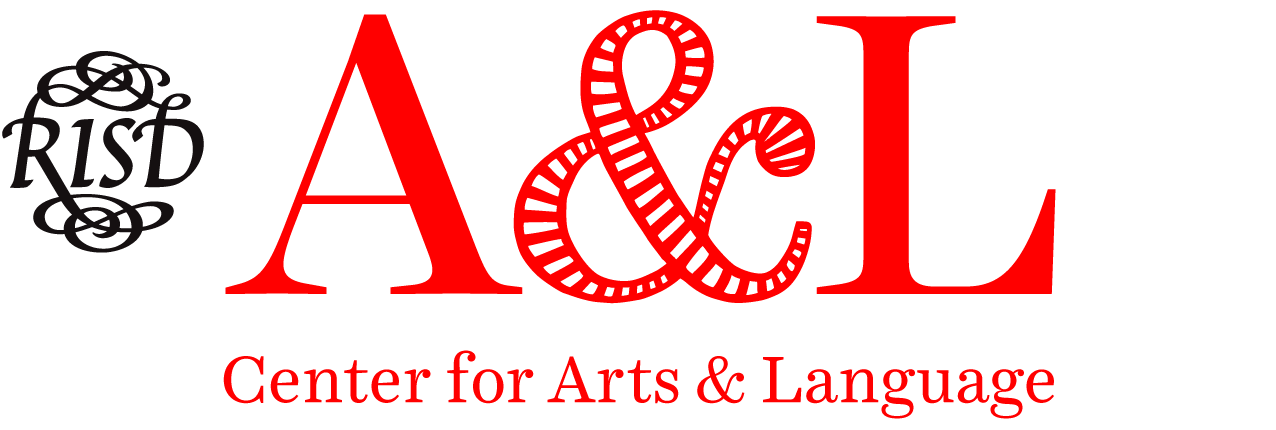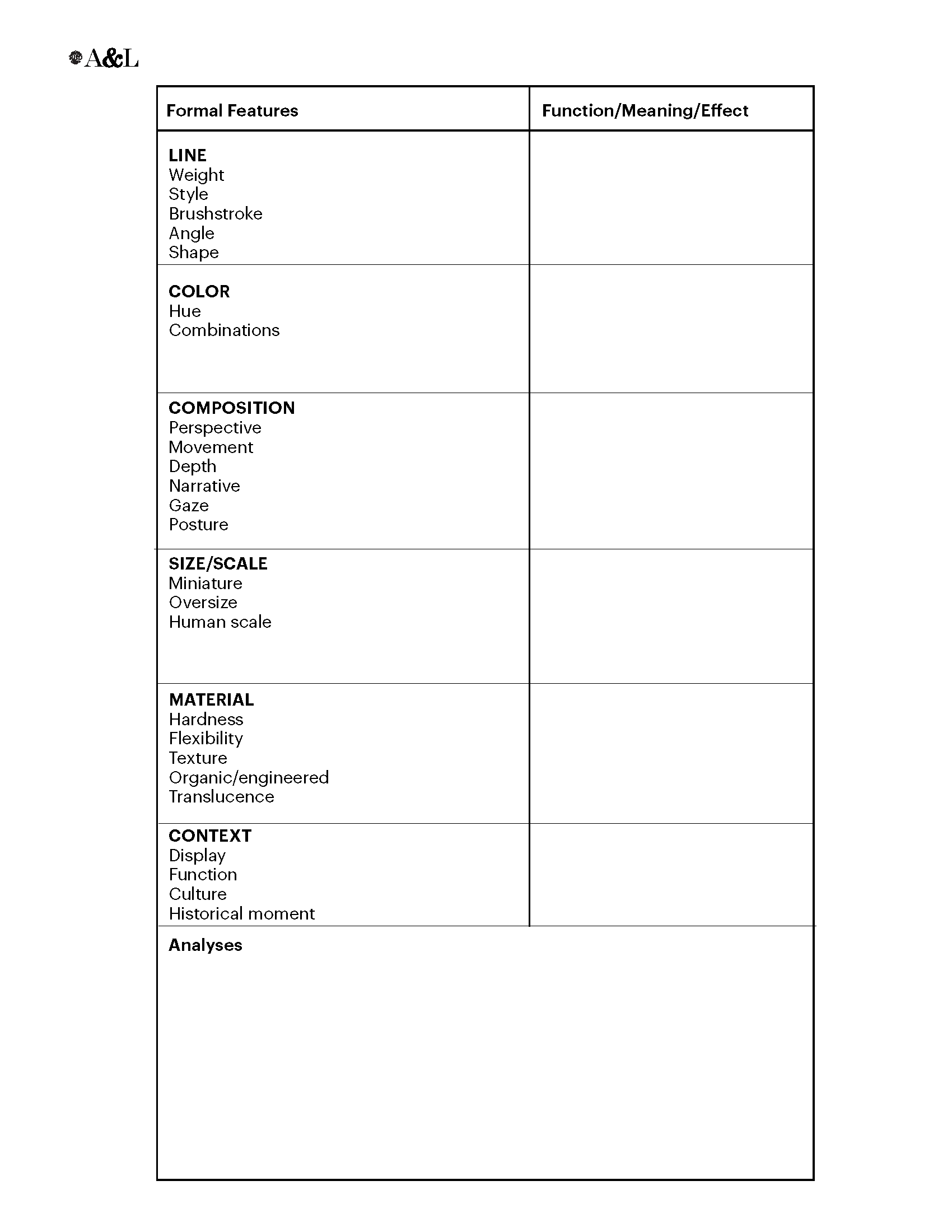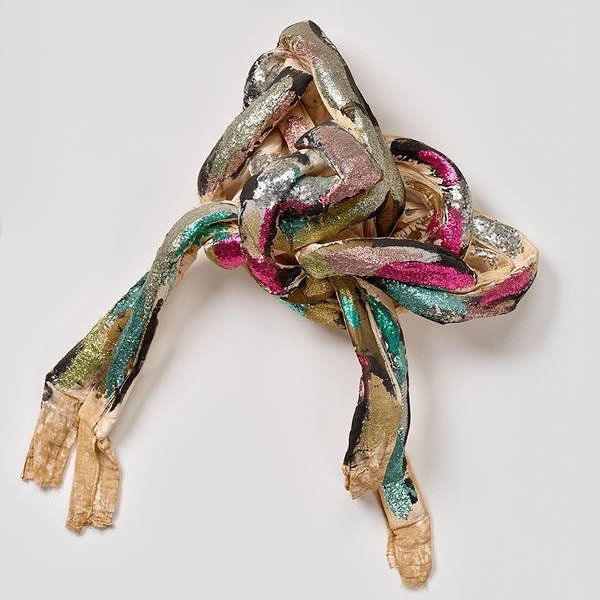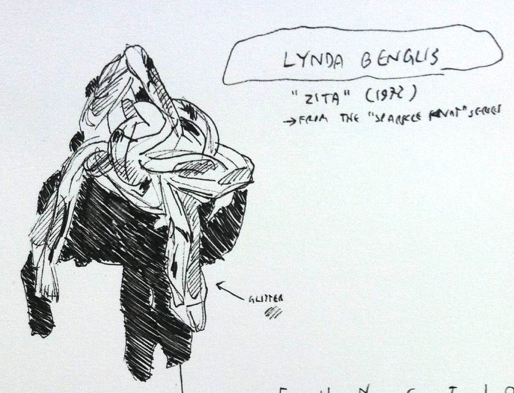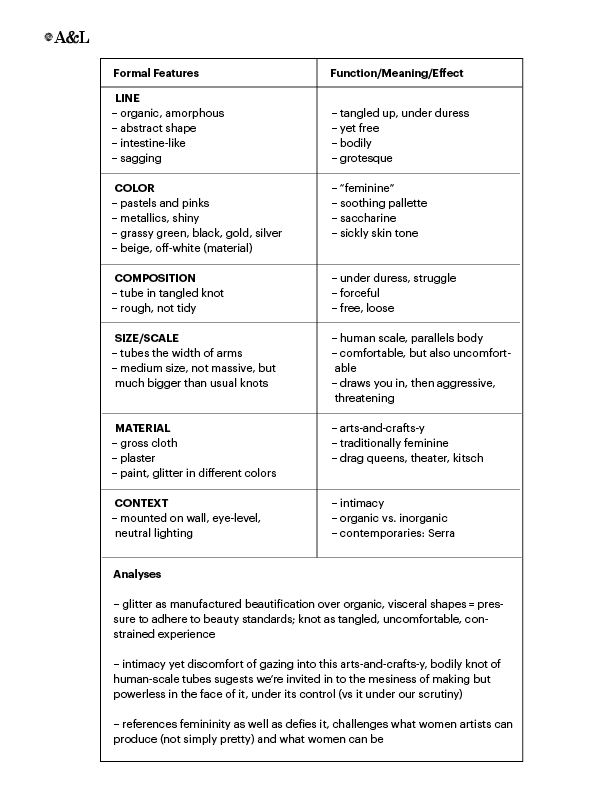Formal Analysis Observation Chart
As an art and/or design student, you are asked to observe, interpret, and discuss art as well as create it. Describing and analyzing art and design is a way of participating in the disciplines of art and design history and criticism. It’s also great practice for talking and writing about your own and fellow students’ work. As part of this process, many students find a brainstorming chart helpful for making detailed observations and analyzing formal qualities.
On the left side of the chart, list all the visual and physical properties you notice about the piece.
On the right side, list the corresponding ideas and feelings you get from the piece.
The two sides are related, like cause (left) and effect (right). You might start with either side: notice formal details and then list associated feelings and ideas; or make note of what the piece makes you think and feel and then trace those impressions back to specific features and qualities of the work. Because this is a brainstorming exercise, it’s okay — even beneficial — to list multiple effects of a single formal feature.
At the bottom, brainstorm some overall connections. You might look for a pattern of similar effects, two recurring but contrasting ideas, or how elements build a deeper story. Making note of multiple possibilities will help you discover the strongest idea and decide how to focus your paper. (While assignments range from observational to narrative to argumentative, they almost always ask you to focus on the most interesting and relevant details under a common theme, rather than deeply describe the whole list.) Here are some broad examples of things you might notice as you read:
Example
In the example below, a student is observing and analyzing Lynda Benglis’s sculpture Zita, in the RISD Museum collection. Students sometimes find that sketching the piece helps them notice more of its formal features.
Download a blank chart for you to make your own observations about a work you’re analyzing. You may notice things beyond the listed prompts—especially details that are relevant to the specific kind of work (a painting versus a teapot, for example). This is a space to generate lots of ideas, so multiple responses are welcome. Make an appointment with a tutor to talk through some of these details and ideas any time.
